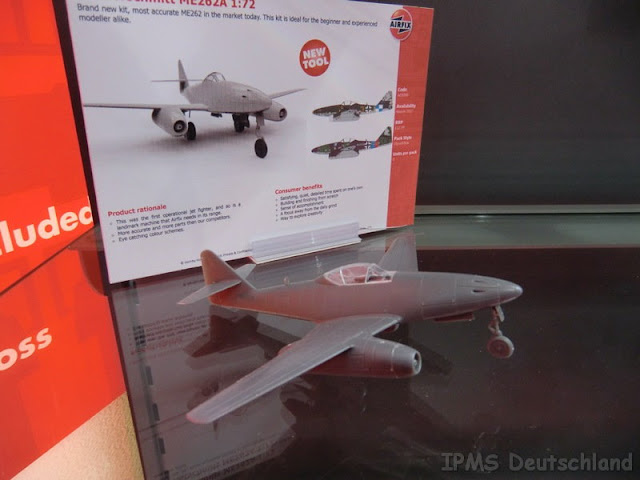
As a few have pointed out on our favourite modelling forum there is still no sign of the new-tool Airfix Me 262 in 72nd scale. Should have been here by now. Airfix are though still taking pre-orders on the website. It looks like it will be a nice kit although I've read one or two gripes about the apparent lack of options such as slats and flaps. I'm sure there will be lots of aftermarket; flaps, vac canopy, resin engines, wheels and so on. And just in time too. The Revell Me 262 is getting very long in the tooth nowadays - the last one I built I had to smash-mold a new canopy. The Academy 262 tooling was also first released way back - in 2007 to be exact! It is reasonably detailed but as with a number of Academy WWII kits the basic outline shapes are a bit off; the fuselage is rather fat and wide with an overly bulbous nose. The Academy glazing is, for example, far too wide for the Revell kit. The canopy in the last Revell 262 I attempted was un-useable but it can't be replaced with an Academy canopy (which also happens to be a tad 'flattened-out' at the top..). We certainly have no lack of aftermarket decal options for the 262 already!
Below; Airfix at Nuremburg - IMPS Deutschland photo
As far as the discussion about 'poseable' slats is concerned, see below - the 'famous' Transit films 262 walkaround sequence in the 'Wings of the Luftwaffe' video series clearly shows that the slats are deployed on the ground. They can be pushed in and pulled out - and could be left out. Whether this was because they had a tendency to stick or not I don't know. The sequence goes on to show the technician working on the inboard slats, pushing them in and then letting them slide back out...


Note that the Me 262's slats are not 'sprung' or have any actuators - they simply slide in and out on rails. In the clip below the technician is pulling them out and pushing them in - whereupon they 'slide' open of their own accord. Once landed and parked-up good practice says they should be closed up before leaving the aircraft for any length of time. You really don't want anything getting into the gap or into the mechanism. Checking the freedom of movement of free-floating slats as they open and close is part of good pre- and post-flight inspection on types thus equipped. Other points to consider; because the Me-262 has a tricycle undercarriage the wing is more horizontal to the ground compared to, say, the Bf 109, so that it is more likely that gravity will cause the Me 262's slats to drop out on their rails. You're less likely to see this on a Bf-109 because gravity will be acting with the coefficient of friction to keep them in. And they could be locked in.
So if you have a man in a black overall walking around your 262 model it would be entirely reasonable to have the slats open on one side and closed on the other. In other words when modelling the Me 262 wing slats could be deployed in any manner you see fit. Note though that in the air aerodynamic forces keep the slats in and they will deploy as the airflow is not sufficient to keep them in and the wing is losing lift. See this discussion
here on britmodeller.com
Note that the slats are lockable. "North American F-86 SabreJet Day Fighters", (Warbird Tech Vol. 3, Hughes and Dranem) - North American engineers actually used the slat locks from a complete 262 wing when they were putting together the slats on the XP-86. "…
Finally an entire Me-262 wing was flown in from Wright Field. North American engineers disassembled the slats and modified the slat track mechanism to fit the XP-86 wing. The engineers also used the slat lock and control switch from the Me-262. Although not perfect, it was at least a start and the slat worked. "
Also on this blog; Revell Me 262 in 72nd scale;
http://falkeeinsmodel.blogspot.co.uk/2013/06/2x-revell-me-262-1a-in-72nd.html














